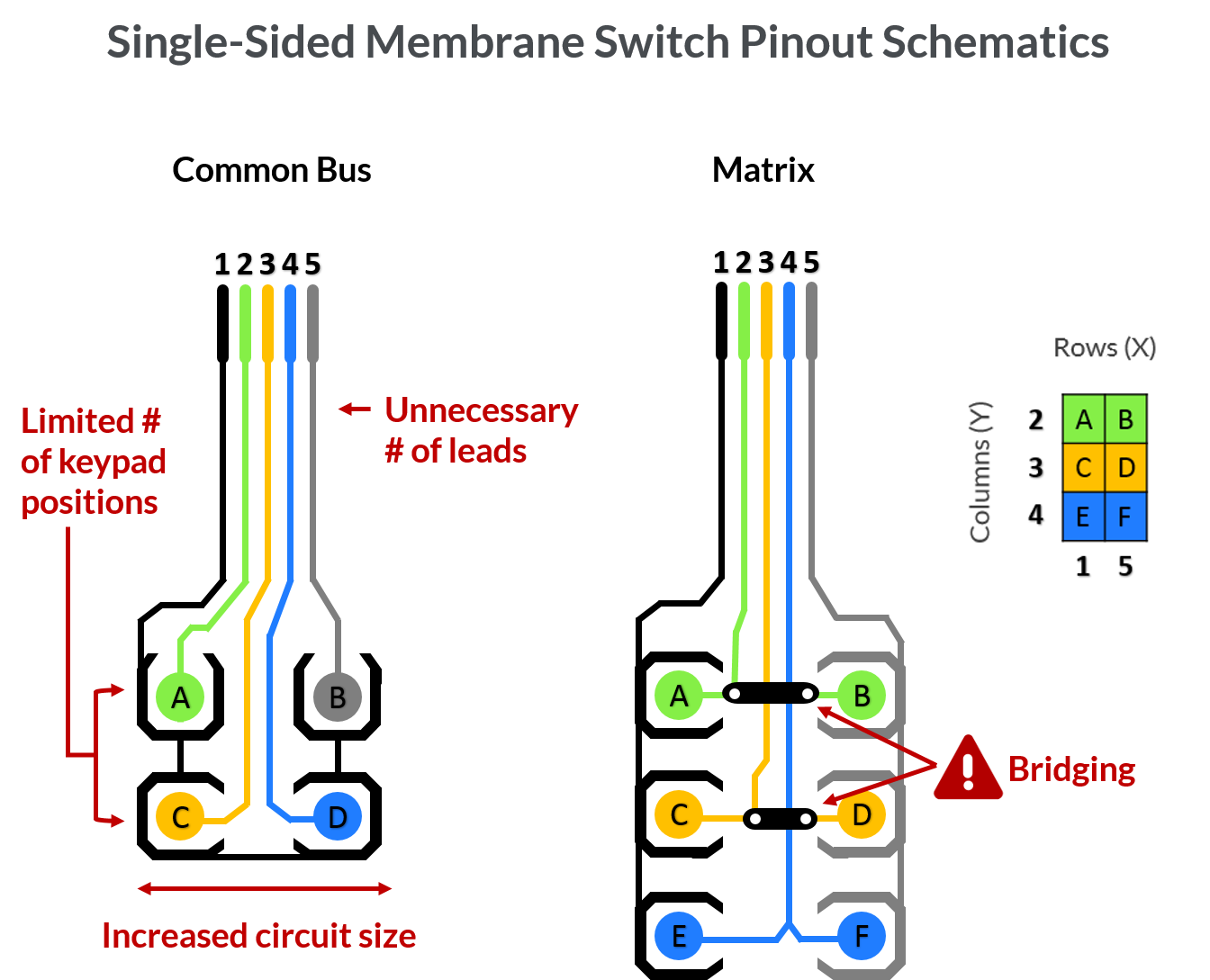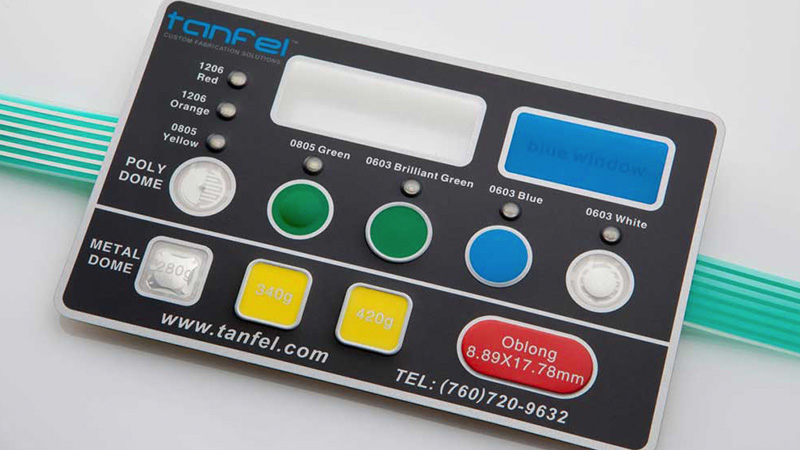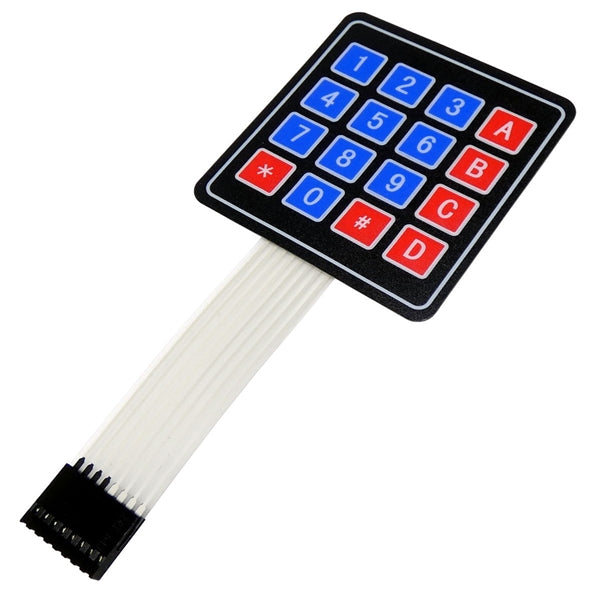The Role of Membrane Switches in Enhancing Product Aesthetics
Wiki Article
Understanding the Relevance of Membrane Switches in Interface
Membrane buttons are indispensable parts in the style of efficient interface, facilitating not only capability yet likewise improving aesthetic appeal and user interaction. Their one-of-a-kind functions, such as resistance to environmental factors and customizable designs, make them appropriate for a diverse range of applications throughout multiple sectors. As we discover the future patterns and various advantages connected with Membrane technology, it becomes clear that these buttons are greater than simply components; they stand for a convergence of advancement and functionality. The ramifications of this modern technology on customer experience are worth taking a look at further.What Are Membrane Buttons?

The spacer layer, which includes adhesive buildings, enables for the splitting up of the circuit layer from the overlay, making certain that the button remains in a non-activated state up until pressed. When pressure is used to the overlay, it compresses the spacer layer, connecting the void and finishing the circuit in the underlying layer. This style not just decreases the physical space required for standard mechanical switches but also enhances the toughness of the gadget, as Membrane buttons are normally resistant to dirt, moisture, and other environmental elements.
Generally located in applications varying from customer electronic devices to medical devices, Membrane buttons are integral to contemporary technology, offering a reliable and easy to use interface that straightens with contemporary style needs.
Benefits of Membrane Switches
While various switch innovations exist, Membrane Switches offer distinct benefits that make them especially preferable in numerous applications. One of the primary advantages of Membrane switches is their portable layout, which permits space-saving executions in gadgets where property is restricted. Their slim profile not only improves visual charm but also helps with lightweight building.One more significant benefit is their resistance to ecological elements. Membrane buttons are commonly secured versus moisture, dirt, and contaminants, making them suitable for usage sought after environments, such as clinical devices and industrial tools. This longevity prolongs the life expectancy of the button, decreasing upkeep expenses and improving dependability.
Furthermore, Membrane switches can be tailored to meet particular design needs, incorporating special graphics and shades that improve user communication. Their responsive responses options can likewise be customized to supply an enjoyable user experience. Furthermore, Membrane buttons are economical, specifically in high-volume applications, as they can be produced effectively.
Applications in Various Industries

In the consumer electronic devices sector, Membrane buttons are common in devices such as microwaves, washing machines, and push-button controls. Their tactile feedback and visual alternatives boost individual experience while offering a sleek, modern appearance. In addition, auto suppliers make use of Membrane buttons in control panel controls and infomercial systems, where space is limited, and customer interaction is critical.
Moreover, browse around this site the industrial field leverages Membrane switches in control panels for machinery and tools, allowing for instinctive procedure in commonly extreme atmospheres. Their resistance to chemicals and moisture makes certain long life and dependability in these applications. Generally, the versatility of Membrane Switches adds dramatically to their extensive usage, making them important in various technical domains.
Layout Factors To Consider for Membrane Buttons

When creating Membrane switches, numerous vital considerations need to be thought about to guarantee ideal performance and customer experience. The choice of materials is crucial; selecting long lasting, top quality substrates can enhance the switch's durability and resistance to ecological variables such as wetness and temperature level fluctuations.
Second of all, the style of the visuals overlay need to focus on clarity and convenience of use. Icons and message must be legible, and the format needs to help with instinctive communication (membrane switches). Furthermore, tactile responses is crucial; incorporating a responsive dome or various other devices can boost the customer experience by supplying physical confirmation of activation
An additional important element is the button's electrical efficiency. Designers need to make certain that the conductive traces click this link are correctly created to minimize resistance and avoid signal disturbance. This includes evaluating the needed actuation pressure and ensuring compatibility with the digital components they will certainly interface with.

Future Patterns in Membrane Technology
As technology remains to breakthrough, Membrane buttons are poised to evolve considerably, driven by advancements in materials and producing methods. One emerging fad is the consolidation of sophisticated materials, such as conductive inks and flexible substratums, which improve sturdiness and minimize the general weight of Membrane switches. These materials not just enhance the tactile reaction yet likewise permit the style of buttons that can stand up to harsher ecological conditions.Additionally, the integration of touch-sensitive technologies is transforming traditional Membrane Switches right into even more interactive customer interfaces. Capacitive touch sensors installed within Membrane button panels can give a more intuitive and responsive user experience, straightening with the growing demand for streamlined, contemporary layouts in consumer electronic devices.
In addition, innovations in printing techniques, such as digital and 3D printing, make it possible for rapid prototyping and modification of Membrane buttons. This flexibility enables producers to react quicker to market demands and customer choices.
Finally, sustainability is becoming a considerable focus, with makers checking out eco-friendly materials and procedures. As these trends unravel, the future of Membrane innovation promises improved capability, aesthetic appeal, and ecological duty, strengthening their duty in advanced customer interfaces across various sectors.
Verdict
In verdict, Membrane Switches represent a vital part in the style of individual interfaces, integrating capability with aesthetic adaptability. As innovations in innovation proceed, the advancement of Membrane buttons is anticipated to more fine-tune customer interfaces, driving technology and improving functionality in a progressively complicated technological landscape.Membrane buttons are important elements in the design of effective user interfaces, facilitating not only performance yet additionally improving visual appeal and user interaction.Membrane Switches serve as an important component Home Page in different individual interfaces, promoting a seamless communication in between customers and digital gadgets.While numerous switch technologies exist, Membrane Switches deal distinctive advantages that make them specifically preferable in different applications.Moreover, Membrane switches can be tailored to satisfy details layout needs, including unique graphics and shades that improve customer interaction.In final thought, Membrane Switches represent an important part in the layout of customer interfaces, integrating functionality with visual flexibility.
Report this wiki page